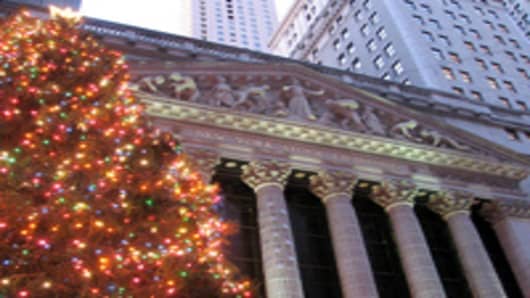As strategists look to next year, they like U.S. equities, and are generally a little less enthusiastic about emerging markets than they had been. They also do not expect to see the kinds of returns from corporate bonds that investors enjoyed in the past year. They are wary that Europe's sovereign issues could continue to bubble up, and they think the U.S. deficits will kick up as an issue from time to time.
Deutsche Bank has a high forecast for the S&P at 1550; Goldman Sachs is at 1450; J.P. Morgan is at 1425; Barclay's is at 1420, and Bank of America Merrill Lynch and Citigroup are at 1400.
"The thing that strikes me about these outlooks is I can't recall a year where there were so many people that were so consensus bullish, and honestly we're right in there too. We're right along with the consensus. We see 10 percent earnings growth and we're at 1350 (on the S&P)," said Andrew Burkly, equities strategist at Brown Brothers Harriman.
"It kind of tells me to watch out in the first half because expectations have gotten so extended. Obviously, the summer was the sweet spot because everybody was so bearish," he said. Since Aug. 27, when Fed Chairman Ben Bernanke first discussed quantitative easing, the S&P has risen 18.8 percent.
Burkly's 2010 forecast was for 1250, just a few points above Friday's close. "I think we will be strong into year end, above 1250," he said. See more on the 2011 stock outlook on page 3.
Even as the market has gained 11 percent year-to-date, individual investors continue to shy away from investing in stocks. "You saw a big redemption from bond funds but you saw it come out of bonds and it's going back into the money market funds," said Burkly.
Scott Wren, senior equity strategist at Wells Fargo Advisers, said retail investors remain wary. "All in all, our retail clients, while they want to be optimistic, they still have glass-half-full kind of attitudes, and they have not gotten back to be fully invested. That's a generalization but I think it's pretty accurate. They're not back to optimistic or fully invested in equities, like they should be," he said.
"There may be some fund guys in here chasing it a little bit, but very little bit, and I sense we have zero retail in here chasing," he said.





